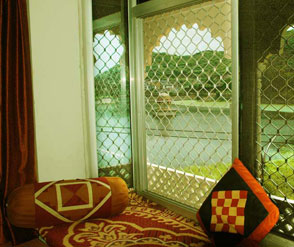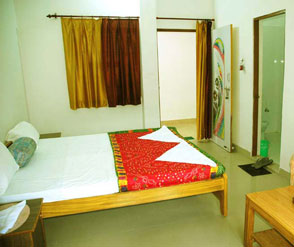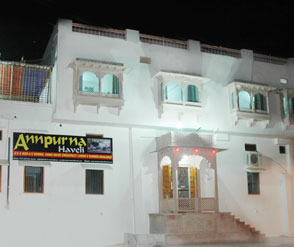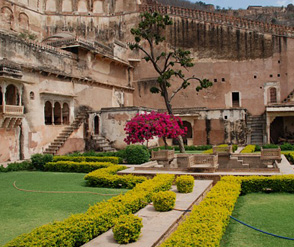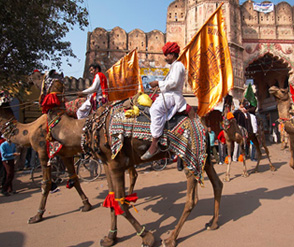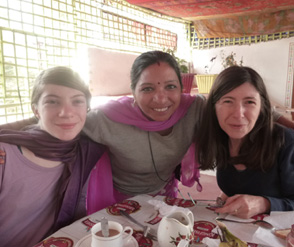Local Attraction
Taragarh Fort:
The serpentine Taragarh Fort and its palace is what immediately strike visitors on arrival in Bundi. Rudyard Kipling who visited here a century ago wrote, "No human hand can create such a splendor; for only angels have that skill". Taragarh is Bundi's pride. This imposing fort was raised at a height of 500 meters atop a hill by Rao Bar Singh in the 13th century. Strong bastions the biggest being Bhim Burj, rise above the chain of palaces built by different rulers over a period of time. A huge reservoir within the fort provided the place white water. A curious feature about it is that whenever the water level rises above the danger level, sluice gates are opened and the running water makes the lanes of the city turn into miniature canals. Striking features of the fort are the Chhatra Mahal, Badal Mahal and Ratan Daulat - Diwan-I-Aam, built by Rao Raja Ratan Singh (1607-31). The Chhatra Mahal was founded by Raja Chhatrasal in 1660 the famous Bundi Kalam miniatures can be found here. The Zenana Mahal and the Badal Mahal also have an excellent collection of miniatures. The famous Chitrashala, built by Rao Raja Umed Singh (1739-70) has open galleries running around it and have the best of Bundi wall painting depicting the Raas Leela, court life and beautiful women. To view the other frescoe-covered palaces, permission is required form the royal family as the fort is private property. The Chhatra Mahal, Phool Mahal and Badal Mahal and Bundi miniatures have been recognized, worldwide, for their superb quality.
The Palace:
This magnificent edifice is a fine example of the Rajput architecture, housing some of the superb Bundi murals.
Chhattar Mahal:
A steep, paved carriage-way is the only way to reach the monument. Of special interest in the palace is the Hazari Pol or Gate of the thousand, the Naubat Khana, the Hathi Pol with its old water clock and the Diwaan-e-Aam.
Ratan Daulat:
Built by Rao Raja Ratan Singh, it is a very interesting structure forming a stable for nine horses and a Hatia Pol. (Prior permission required for visit.)
Chitrashala:
A fascinating pavilion and a gallery of miniature murals embellish the palace. Elaborate colorful paintings on the walls depicts scenes from the 'Ragmala' and Raasleela' - the Radha-Krishna story.
Nawal Sagar:
Visible from the fort is the square artificial lake of Nawal Sagar, broken up by islets. A temple dedicated to Varuna, the Aryan got of water, stands half submerged in the centre of the lake. The reflection of the entire city and its palaces can be seen in the lake-making it a unique attraction of Bundi.
Step-wells of Bundi:
For anyone who wants to see the beauty of different types of step-wells, a visit to the township of Bundi is recommended. A number of step wells have been made over a period of three centuries by members of the royal families as well as the people of Bundi who took interest in a worthwhile cause. Out of around 20 step wells in the area, those worth a mention are Naval Sagar, Sisodiaji ki Baori, Purushottam ki Baori, Sukhi Baori, Manoharji ki Baori and Rani ki Baori. While baoris in Rajasthan display a dexterity and architectural beauty typical of the state, non them compare with Rani ka Vav (queen's step-well) at Patan, Gujarat, except the Rani ki Baori at Bundi. Though not as large in its dimensions, it is extremely ornate and embellished with excellent of carving of elephants with their trunks turned inwards, as if they had taken water of the baori and were quenching their thirst. As you descend towards the water source, large well preserved statures of Ganesh, Saraswati and the ten incarnations like Matsya, Varaha and Narsingh attract your attention thou some of them have become victims of the elements over time. The well has depth of 46 metres and a very ornate & exquisitely carved Toran Dwar. The length and breadth of the baori is 40'*30'. The delicately chiseled arches on the columns add to the beauty and grandeur of the total structure which is an example of the Rajasthani baori architecture at its best. This baori was built in 1600 AD by Rani Natawati, wife of Rao Raja Anirudh Singh. She is reported to have commissioned nearly 21 baoris.
Another step-well is Dhabaiji ka Kund which was constructed by Dhabaiji Raj of Bundi in 1911 AD. It is situated near the Lanka Gate. The stairs lead down to a depth of around 50 feet. There are two rooms with windows (Jharokha).
Sukh Mahal:
A magnificent summer palace on the Sukh Sagar Lake amid the luch surroundings of a beautiful garden. An underground tunnel is believed to run from the Sukh Mahal to the old Palace.
Phool Sagar:
The 20th century palace with an artificial tank and picturesque gardens. Presently, it is the residence of the former ruler. (Prior permission of secretary is required for a visit.)
Shikhar Burj:
Located in the sun-dappled forest, Shikhar Burj was the royal hunting lodge. Wild-life in the Bundi woods comprised tigers, deer and boar. The royal hunts of Bundi were well renowned.
Keshar Bagh:
An ancient garden near the Shikhar Burj with beautiful chhatries of the Bundi rulers and their queens all examples of the town's rich architecture. (Prior permission required for visit.) Eighty four pillared cenotaph: an amazingly magnificent memorial with 84 pillars in a single cenotaph along with a Shiva Lingam. It was erected by Rao Anirudh.


